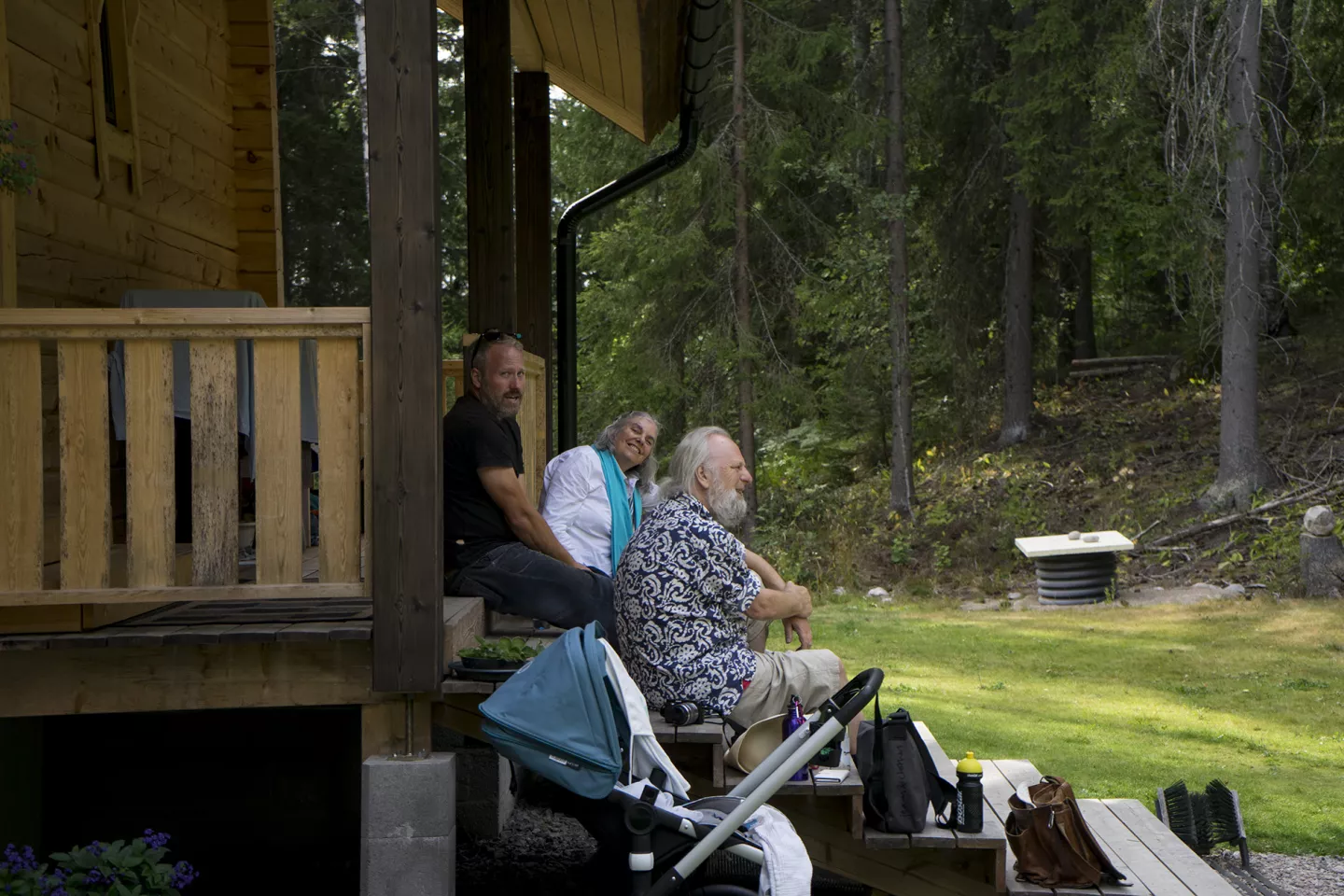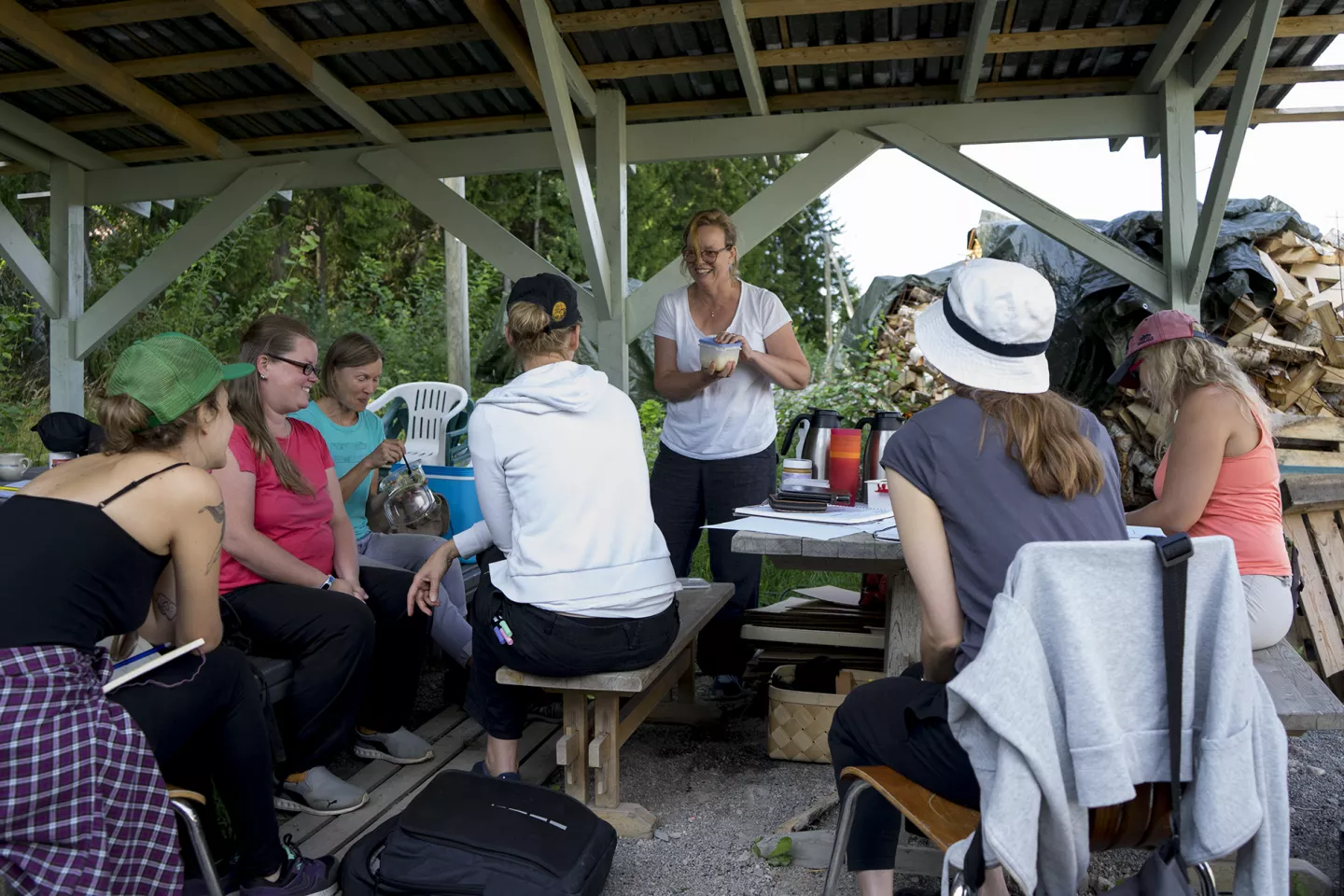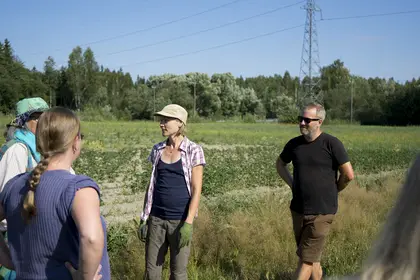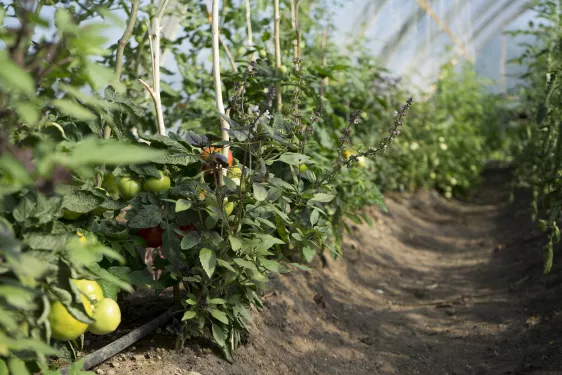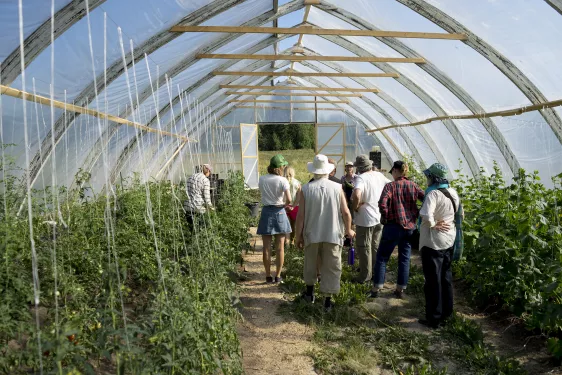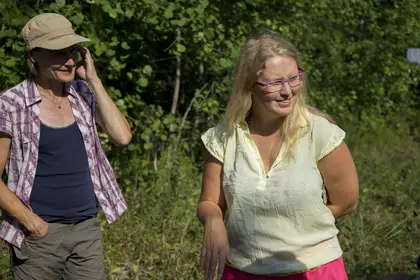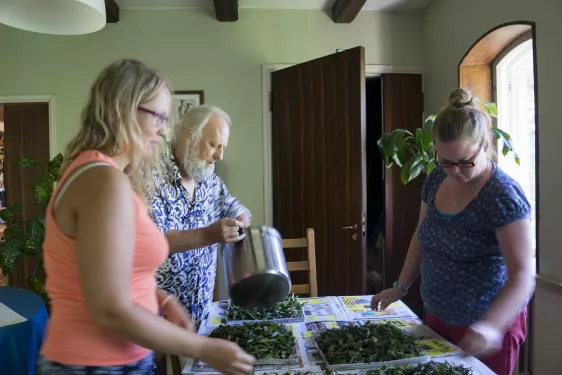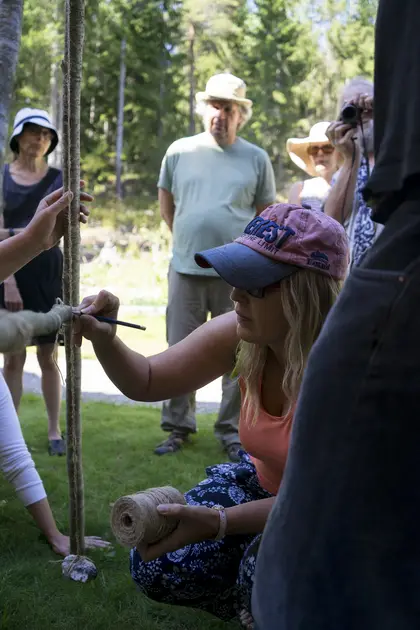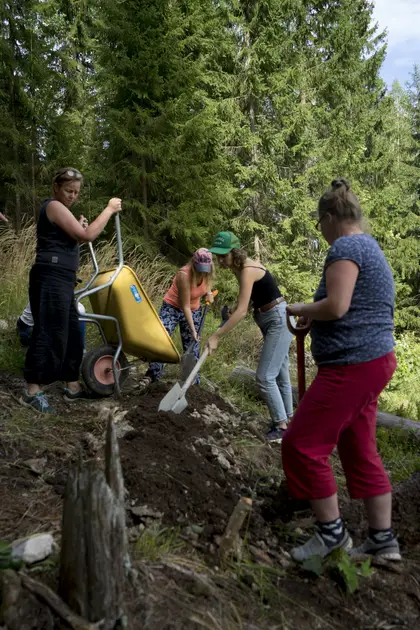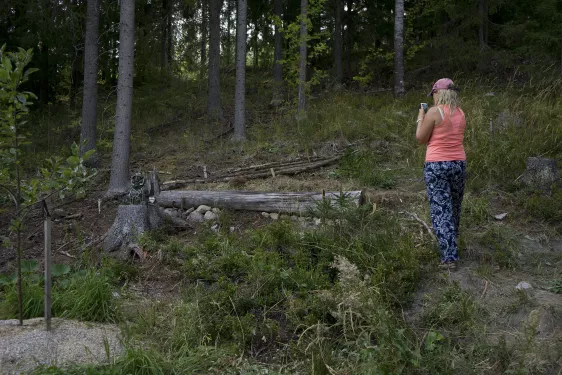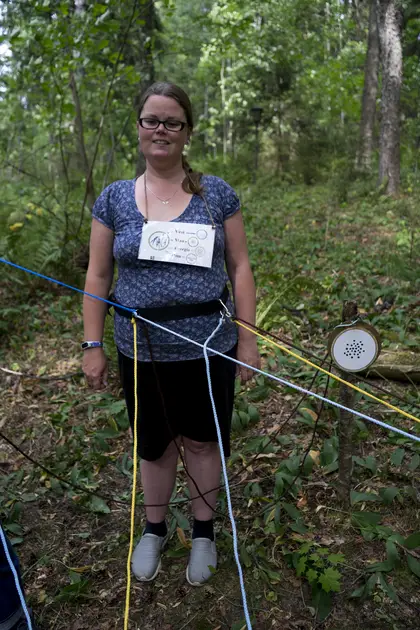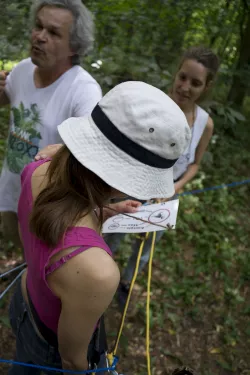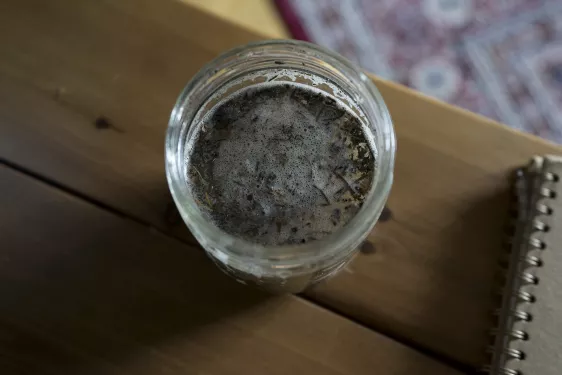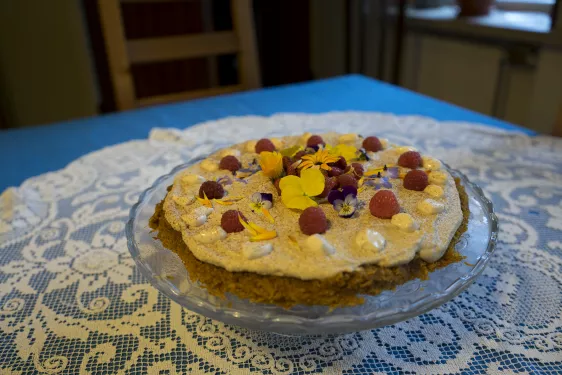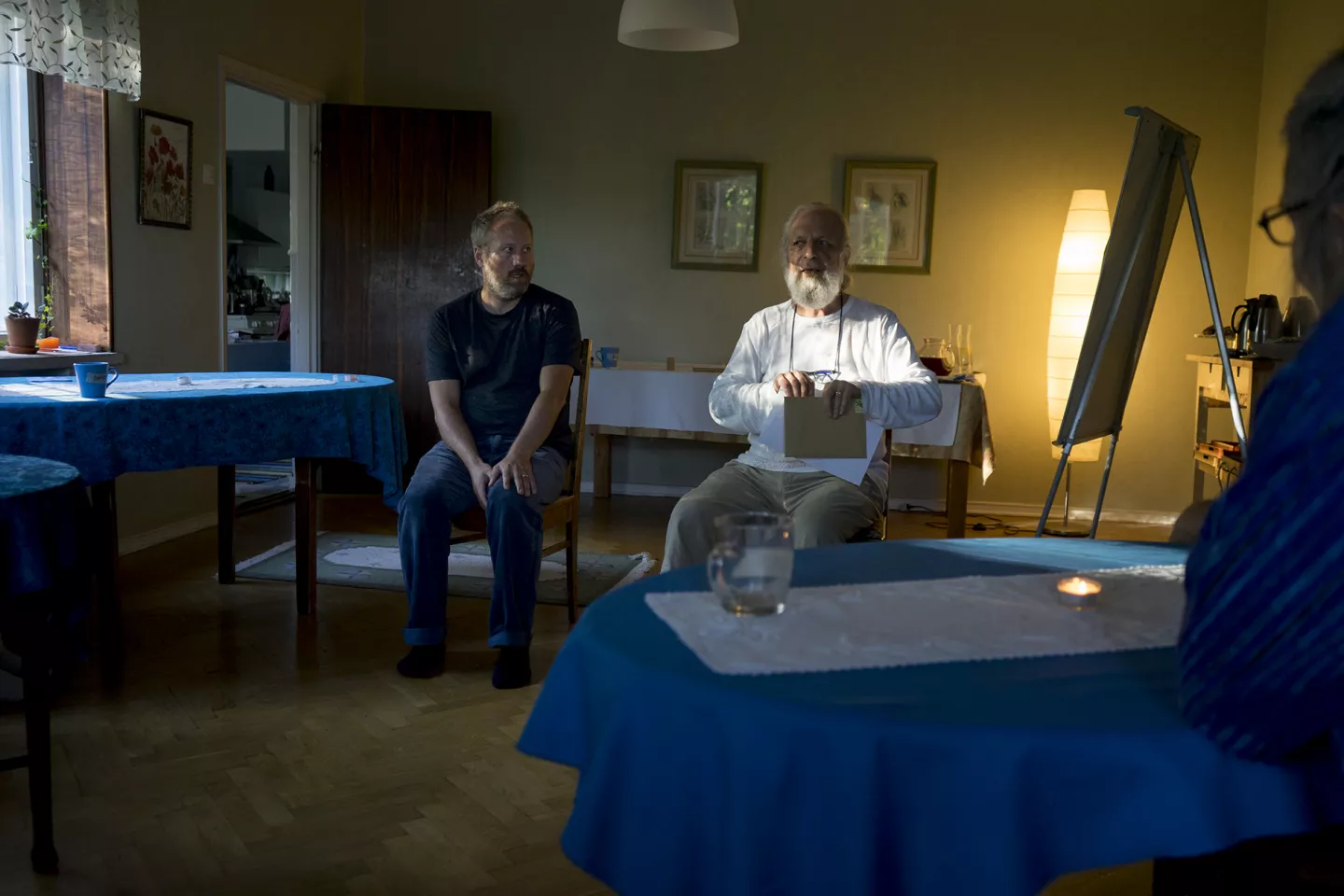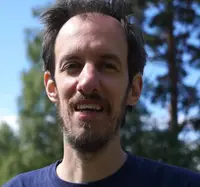In 2018 a public garden run by a non for profit organization suddenly re-branded themselves as a Permaculture. I had a longer discussion with their head gardener which I knew from one of the community gardens and a very short discussion with one of the “managers” who I knew from Transition Town. I also had a discussion on their Facebook page and asked some questions about their design. They couldn’t answer the questions, they had no design. Their consensus was: Permaculture is not a registered term / trademark and therefore can be used by anyone for anything. There is no need for a design as anything can be copied and pasted from the internet. And a PDC or a Diploma in Permaculture is useless as a lady at their Facebook page put it: “I have learned gardening from my grandfather, I know everything about it and I don’t need a jodeldiplom”. The term “Jodeldiplom” is a German creation by German humorist Loriot and describes a diploma that isn’t necessary or that isn’t of any use. She was referring to the Diploma in Applied Permaculture and to the Permaculture Design Certificate.
Some years before that incident I came across Permaculture while visiting a friend in New York. We went to a design presentation of Andrew Faust’s class. (You might know him from his appearance in the film Inhabitat.) Since then I checked for Permaculture design courses in our near, which was during that time Essen, Germany, but couldn’t find any. Then we moved to Finland. In 2017 I came across the PDC run by George Sobol at Elontila Lahti, but the course was at the same time as the Blueprint meeting in Tamera. I gave precedence to the meeting as I was part of the Living Manual group and had to be present and present what I called “The missing link”. Lumia and I went for one day to Elontila, to meet George, Kaija and Ilkka. There I gave an introduction to biogas. I promised George that if he is going to hold the course again in 2018 Lumia and I would take part. For us this was the best possible fit. Elontila is about 90km from Beyond Buckthorns. The climate is pretty identical, and we could easily drive home during the day-off-day. Perfect match!
By the beginning of 2018 I heard from George that Ilkka is planning for the course. In early 2018 Ilkka announced the course and Lumia and I subscribed immediately. Hey, we promised to take part! From February to June we kept fingers crossed that enough people would book the course. Our plan-B (actually my plan-B), attending a course in Croatia, wasn’t really an option. It was more like this or waiting. In June we learned that the course would definitely happen and we were glad for that.
It was really something we were looking for a long time and finally it was in reach. It was a little like Christmas and Birthday at one day. In April, it was during Permakulttuuri Nyt! -event, I had a conversation with Dan McTiernan from Wild Farm Permaculture. He told me that he will be a co-tutor as he wants to become a teacher and therefore this is part of his Permaculture Diploma.
On Tuesday the 7th of August (we arrived the evening before) the course started and I got ever excited about the curriculum and all the different lectures, workshops, etc. The days during that time were very long. We started at 7:45 with breakfast and usually ended with an open session after 20:00 o’clock. Most of the time I went to bed at 23:00 o’clock or even later. I enjoyed those long discussions about different topics with all the fellow participants. Each of us had a different skill set and knowledge and background that got shared over the courses period. The course’s participant were pretty international. We got Australians, Russians, Brazilians, Germans and Finns. Kind of a very interesting mix, isn’t it?
The place itself, the Elontila, is kind of magic. A big red torii, a wooden mark that you will find on the entrance to a Japanese shinto shrines, marks the entrance into the forest. A small red torii build of bricks on the floor marks the entrance into the building. It is pretty pictorial, but by passing through the torii someone enters a shrine, the temple, a temple of knowledge. The house is made of bricks, which is kind of unusual for Finnish rural buildings. Elontila has this kind of “quality without a name”. Every room is placed and crafted very thoughtfully. Its large entrance hall, the floor, the windows, the stairway, everything has this magic touch. It is the perfect place for a PDC. Besides the house is a created forest that comes with several walking paths and “sightseeing points”. There are two big stones that can be climbed on by a stairway.
Our hosts Kaija and Ilkka were marvellous. The prepared delicious vegetarian food for us every day. Since that course I’m kind of addicted to Finnish style porridge for breakfast and I also value soups much more again. They spoiled us with self made buns, breads and snacks every day. Even one day Kaija taught us how to beak her delicious linseed bread. (We haven’t yet baked it but it will be in our oven soon). One day we had spaghetti with that superb home made pesto. I love pesto, I do. Food is key, isn’t it? And their food is really something. It is the fuel that keeps you going, that makes those days perfect days.
During the course we had some site visits. One was to the nearby Camphill Community. Camphill Communities take care of disabled people by integrating them into the farm’s work. The work involves taking care of the biodynamic vegetable garden, the chicken, cows, weaving, etc. We also learned a little about the principles of bio-dynamic farming and about the community. We also had the chance to ask questions while they showed us the farm.
Another site visit was to a CSA (community supported agriculture) in Lahti. The CSA moved to a premises that was a former managed woodland. Due to the newly rented land many CSA customers left. My speculation is that the customers didn’t believe in the CSAs ability to produce a decent amount of food but also that there was no connection to the electric grid and no WASH (Water, Sanitation, Health). While the CSA was still off-grid in terms of electricity they managed to get a composting toilet. They also got the key for the neighbours shed so they can get drinking water. Due to the very dry season, the difficulties in water management and storage, and a very water hungry greenhouse, their vegetable production rate was at a very low level. We got shown around the place and had the chance to ask some questions.
That site later became our Design task.
The design (Nicks view)
For the final design, we got split up into two teams. Lumia and I requested to be in different teams to make sure that our dynamic doesn’t influence the teams too much. Nina, Tanja, Irina and I created a marvellous design for the CSA. We focused on WASH and long term water management. Our first nodal intervention point was a facility where employees could wash their hands after using the toilet. Whoever is working in food production wants to wash hands after using the toilet. That is an inevitable demand on the producer. Everything else is just disgusting. Second main focus was long term water storage. We suggested a water retention landscape placed on contour using raised beds. (Actually the landscape told us that.) We suggested the creation of ponds in different areas. As there is a very wet place already intervention is minimal to create the pond as the pond already wants to be created, asking for creation. We also checked for methods to produce drinking water. Pumping water into a natural filter bed would end up in drinking water. But also drinking water can be created from rain water.
We had some ideas about harvesting the rain water of the green house poly tunnel. We basically dug slit PVC pipes into the side so that the rain water can run down the green house. The water is then collected in the pipes and transferred into the inner side of the green house – where it is needed.
We got lucky during our observation day. Two customers of the CSA came by. They told us that the place is difficult to reach, that there are not enough parking spots, etc. We discussed Zone 0 for so long and everybody felt that the place where it was was simply wrong. Too far away, to disconnected, to difficult to reach. We didn’t move a house, we moved a resting place. While the one might be more secluded the other isn’t necessarily. Of course we moved Zone 0 to a different place. The current situation asked for it to . We combined it with a towards the street visible architecture that allowed for a sign and a place to pick up the weekly vegetables. We moved it because the CSA haven’t had that many workers. One person needs to fill for more than just gardening. Simple as that. We placed it so that the Water Retention Landscape and the green house poly tunnel was still in Zone 1 and walking distance was minimum. The tutors didn’t like it.
We had some difficulties with our Zone 4. We were undecided about it. There was a mixture between having a managed woodland or just pure unmanaged nature. It was basically Zone 5 vs. Zone 4 and we didn’t come to any conclusion about it. I wanted a retreat with some chairs and a table while others wanted it to be just forest. There is probably no perfect solution, but we should have come to a conclusion instead of leaving it open.
I personally got myself in trouble with following a friends suggestion adding a RAM pump into the design. The well offers about 2,8 m³ of water within 24 hours. I thought that this constant flow of water could have been enough to use a small RAM pump to pump the water 1,6 m upwards. Of course a lot of water would have been spilled over but the overflow would have been connected to the newly created pond. I didn’t run the calculations and couldn’t answer the questions. Next time I have my maths and physics ready.
The design (Lumias view)
The final design process was really great. I shared the team with Rachel and Maria, two talented and warm people. We started the process by sitting down on the site and writing down our hopes about the process, the design and working together. That was really valuable, as we all felt that we should use this opportunity learn, to design without fear of failure and just try out everything we learned during the course. We made the final task more about the process than the end result, and that was a really good solution.
We started by really getting to know the area and its different facets. After the afternoon on site, we got back to Elontila and started working on our maps. I was responsible for creating a vegetation map and trying to identify different plants we found on site and learning what they represent.
On the next day the design work started. Our key was to keep more water in the area and get more organic material into the hard clay soil so that the CSA could function properly as soon as possible. The design was made very modular, building on itself year after year and prioritizing design elements depending on how much workforce would be available at every given time.
We made the presentation a real fun event with symbols of all our elements, which were then attached to the map with blue tac during the presentation. We really ran out of time, as I guess we really tried everything we learned out and had a very, very detailed design to present!
It was a great learning experience and working in a team with such energy, kindness and understanding was a really beneficial experience. Our design was really good, too, and I do hope some parts of it could actually be used on site.
Those 10 days were mostly pure fun. My suggestion for the design part of the course is to let people choose if they want to be a team of their own instead of forcing them to become part of one. If people are put into teams more focus needs to be put on team work & team forming. Some basic principles beyond non-verbal communication would have been really helpful.
It was the last days of the course that made me think whether the current shape of a PDC or how it is done must evolve further. Lumia and I will now check for our Diploma Pathways and we would like to thank everyone who was at the course.
To come back to the example I gave in the beginning: I would always recommend to get a PDC. It is worth it. Every penny of it. Running a “Permaculture garden” without it might be just irresponsible. Then questions like “Is it possible to adjust the biogas output so that I can use the gas for my flame thrower that I use to get rid of weeds” wouldn’t arise in the first place. And Permaculture is not just “Copy & Paste”, or?




